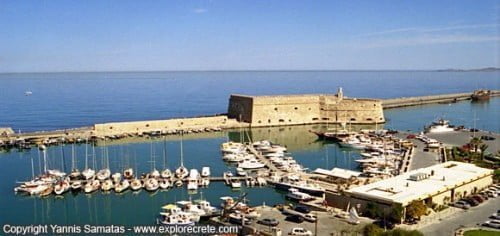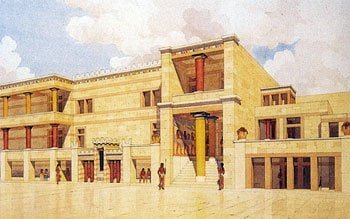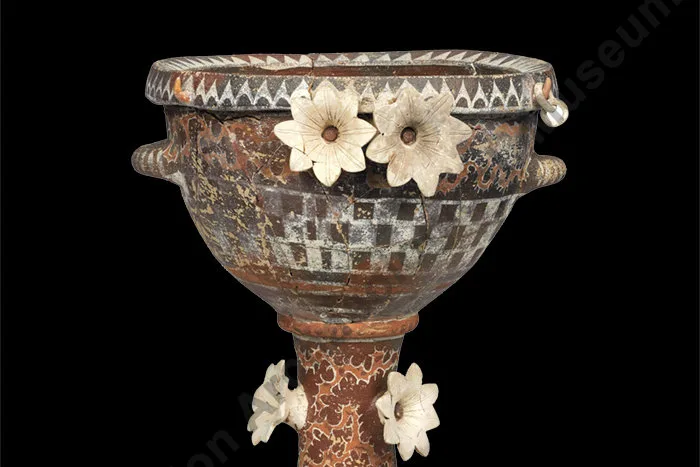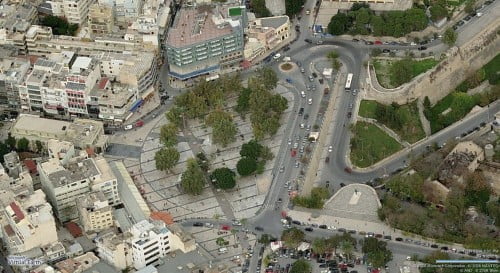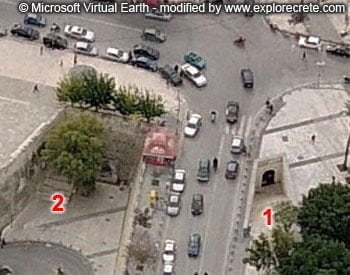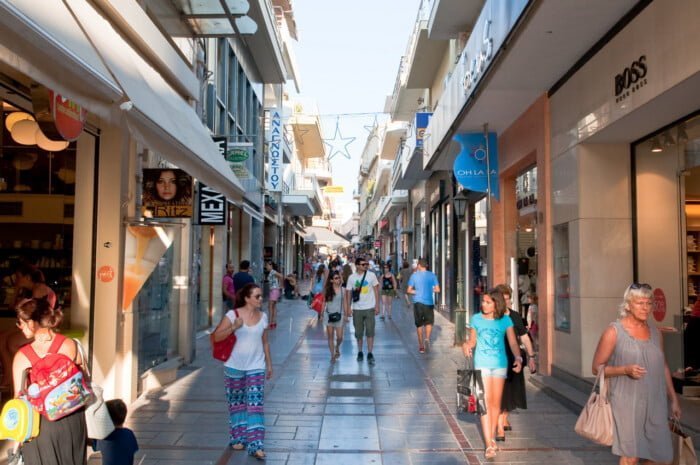Saint Catherine in Heraklion
Saint Catherine – Cretan School of Icon-Painting
Saint Catherine Square
Saint Catherine Square is just north of Saint Minas, at a lower level than the cathedral. Saint Catherine Square is named after the church of Saint Catherine which stands there.
Saint Catherine Square is a pleasant oasis in the heart of town. There are cafés for grown-ups, while children have lots of space to play safely. A distinguishing feature of the square is the thousands of pigeons which many locals come and feed every day.
Saint Catherine
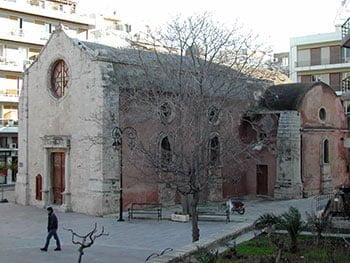 The church of the Monastery of Saint Catherine of the Sinaites, to the northeast of Saint Minas, was formerly a dependency of the Monastery of the Sinaites, which bestowed the church on the Metropolitan Cathedral of Saint Minas in 1924.
The church of the Monastery of Saint Catherine of the Sinaites, to the northeast of Saint Minas, was formerly a dependency of the Monastery of the Sinaites, which bestowed the church on the Metropolitan Cathedral of Saint Minas in 1924.
The Monastery of Saint Catherine was founded in around the 10th century and the building preserved today was its main church. The church was built in the 16th century and is obviously influenced by Venetian architecture.
The Monastery of St Catherine had an income sufficient to support a large monastic community. In the period between 1550 and 1640, the School of St Catherine of the Sinaites became a school of university learning, teaching Ancient Greek authors, Philosophy, Theology, Rhetoric and Art. Many graduates of the school distinguished themselves in Greek literature.
After the fall of Heraklion to the Turks in 1669, the church was converted into the Zulfikar Ali Pasha Mosque. It remained a mosque until the last Muslims left Heraklion in 1922, at the exchange of populations between Greece and Turkey.
From 1967 to the present, the church of Saint Catherine has housed an important exhibition of Byzantine icons and religious objects including manuscripts, vestments, and wall paintings, representing six centuries of Orthodox history (14th-19th century).
The atmospheric church is also home to six unique works by the famous icon-painter Michael Damaskinos, a major exponent of the Cretan School.
A service is held in the church every year on 25 November, the feast of St Catherine. The exhibition is open daily from 9.30 to15.30, with a entry ticket.
The Cretan School of Icon-Painting
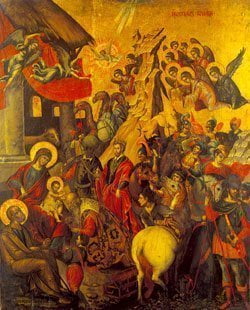
Following the Fall of Constantinople, the capital of the Byzantine Empire, to the Turks in 1453, many artists moved to Venetian-ruled Crete, transplanting the sacred art of icon-painting.
In the late 15th century, contact with Venice introduced aspects of Renaissance Italian art to Crete, especially as regards technique and subject-matter. These were amalgamated with the Byzantine tradition, giving rise in the 16th and 17th centuries to an entirely novel style known as the Cretan School of Icon-Painting.
Its main features are the perfection of the figures, which are depicted as more human, and the attention to detail, rendered in rich colours. This was the artistic background that produced the great Heraklion artist Domenikos Theotokopoulos, known worldwide as El Greco.
It is worth noting that in 1600 Heraklion had 20,000 inhabitants and 200 painters, a number indicative of the flourishing of the arts in Crete. Unfortunately this was violently interrupted on the fall of Heraklion to the Turks in 1669.
One of the leading exponents of the Cretan School was Michael Damaskinos. He was born in Heraklion in 1535 and lived in Venice for many years. It was probably he who established the rules of the Cretan School. Six of his icons, originally from Vrondisi Monastery in Zaros, are on display in the church of Saint Catherine.
Other representatives of the Cretan School are Georgios Klontzas and Theophanes the Cretan.
© explorecrete.com All Rights Reserved. Reproduction or copying without permission is prohibited.

